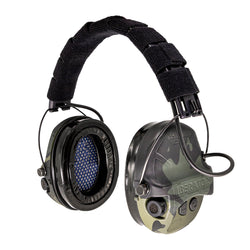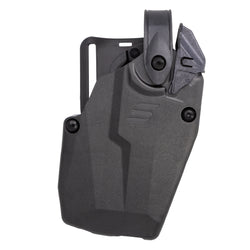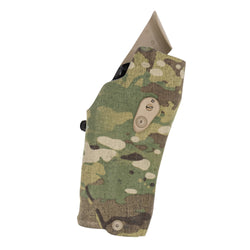Active Self Protection, also known as ASP, is a YouTube channel every law-abiding gun owner should subscribe to. It’s not your typical “guns and gear” channel; instead, it’s known for thoroughly breaking down uses of force and discussing them in depth. John Correia is the man behind ASP, and he’s the author of today’s drill, the ASP 10-Round Skill Check.

This isn’t just a drill; it’s a handgun proficiency assessment. It allows you to see where your skills lie and will hopefully help you identify areas for improvement. While I generally avoid appealing to authority, it’s worth mentioning that Mr. Correia keeps things grounded and focuses on core skills he’s observed through countless hours of analyzing violent engagements.
Drills like the ASP 10-Round Skill Check enable us to benefit from Mr. Correia’s expertise without having to witness thousands of hours of violent encounters ourselves. Let’s head to the range and apply his expertise to our practice.
What You’ll Need for the ASP 10-Round Skill Check
This drill is designed for concealed carry and potentially plainclothes police. You’ll need a holster you can conceal, as the drill is shot from concealment. Grab an Incog, a Schema, or something similar and get ready to shoot from concealment.
Unsurprisingly, the course of fire requires 10 rounds. Here’s my suggestion: bring a whole box of ammo and shoot it five times. You’ll need a gun that can hold at least six rounds, which means five-round revolvers are out.

The ASP 10-Round Skill Check is designed around a USPSA target, but IALEFI Q or IDPA targets are acceptable if USPSA targets aren’t available. A shot timer is required, and of course, you’ll need eyes and ears for safety. I’d also suggest you bring a notebook, as we’ll need to record some times.
A significant benefit of the ASP 10-Round Skill Check is that you don’t need much. No barriers, no partner, and no multiple targets. You just need the very basics to get out there and shoot it. Using only 10 rounds also makes it affordable, so you’re not consuming a ton of ammo.

A Word On Scoring
You’ll fire ten rounds, and the target section determines how much each shot is worth. An A-Zone shot is worth five points. C-Zone shots are worth three points, and D-Zone hits are worth one point.
The ASP 10-Round Skill Check allows for a maximum of 50 points. Time also comes into play. We’ll take our score and divide it by our overall time.

Don’t worry, math nerds, we aren’t done yet. You’ll then multiply that number by 12.5. That’s your final overall score. The higher the score, the better.
Let’s say I score 44 points in 7.5 seconds. So, 44 divided by 7.5 is 5.86. We then multiply 5.86 by 12.5 and get a score of 73.25. It’s an interesting scoring system that accounts for both time and accuracy, helping fast and accurate shooters find the right balance to become well-rounded.
Shooting the ASP 10-Round Skill Check
We are going to shoot all of our strings of fire from seven yards. No movement is needed. Set your target up, conceal your gun, and place your hands at your side.

Each string’s time needs to be recorded for our final score, so remember to jot this down in your notebook.
- String 1: Draw and fire one round to center mass. Repeat this portion for a total of two repetitions. Reset and get ready for String 2.
- String 2: Draw and fire two rounds to the head. Reset and, if necessary, reload your gun.
- String 3: Draw and fire six rounds center mass.
That’s it! You’ve completed the ASP 10-Round Skill Check. Calculate your score and write it down! Keeping a log of all your shooting is how you’ll improve.

I suggest shooting this five times total, consuming one box of ammo. With that said, the most important score you can record and pay attention to is your very first. This is your cold performance, and it’s how you’ll perform when it counts the most.
Breaking Down the ASP 10-Round Skill Check
The ASP 10-Round Skill Check forces you to pick and choose between speed and precision. String 1 can be raw speed. It exercises and encourages a fast and efficient draw, and landing a single A-zone shot is fairly easy to do quickly.
String 2 forces us to focus more on accuracy and recoil control. You want your draw to be rapid, but you might take a little more time to put a round on target when it’s a headshot. We have to mix speed and accuracy here.

Our third string is a Bill Drill, where we focus on a rapid draw and rapid trigger pulls with a critical focus on recoil control. The ASP 10-Round Skill Check is an exercise that tests several skills and gives you a great drill to shoot at the range.

I’m a fan of this drill. It’s not absurdly complicated. It’s grounded and focused on critical skills necessary for self-defense. The only real downside is that it’s limited to guns that can hold at least six rounds, which excludes many J-Frames.
If capacity doesn’t hold you back, get out there and give it a try!









